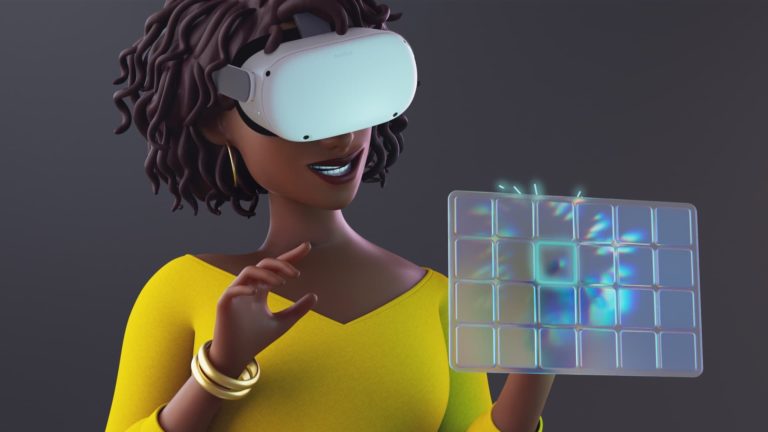
VR continues to reach new milestones in consumer and commercial traction. While this is great news for the industry, it also means some issues are becoming increasingly prominent. Multi-user experiences, in particular, have struggled to impress some audiences due to frequent user interface (UI) challenges.
UI Challenges in Multi-User VR
According to AR Insider’s research arm, ARtillery Intelligence, 25 percent of American adults have used VR. Multi-user experiences will become more common as those numbers keep climbing, making it more urgent to address current UI challenges. These obstacles fall into three main categories: synchronization, lag, and cross-platform support.
Synchronization Issues
The most serious UI issue in multi-user VR is the lack of data synchronization. Rendering a VR environment can be challenging enough for one user. Ensuring they render at the same time and in the same way for multiple people is even more difficult. However, it is crucial to get it right.
Multi-user VR experiences only work well if everyone sees the same elements in real time, even if viewing them from different angles. This is particularly pressing for commercial VR applications. Consider how architects can use VR to show clients designs in virtual walk-throughs. These simulations will fail to achieve the desired results if they see the building in a different scale than the architect.
Lag
Latency issues are another concern. Synchronicity between users is also a matter of loading times, so high latency can stop them from experiencing things in real time. This lag can limit cooperation in commercial use cases and increase frustration in gaming — the largest market segment in the industry.
Conventional video games and other online experiences have largely overcome this obstacle. However, VR presents additional challenges, given its complex rendering requirements and reliance on remote servers to compensate for the lack of on-device processing power.
Cross-Platform Support
Support between platforms poses another issue. The VR end device market is evenly split between product types, and that does not account for various device developers within the same category. Consequently, many people use different hardware, so multi-user experiences must support multiple platforms to reach most of the market.
Cross-platform support can be challenging in this space, considering the wide gamut of on-device processing power and functionality. Different devices may have unique development requirements, limiting multi-user experiences.
How Multi-User VR Can Move Forward
The VR industry must address these challenges to ensure the technology’s continued success. Pressure to do so is particularly high in light of how 81% of businesses today plan to compete mainly through their customer experience. Poor multi-user experiences will make that kind of differentiation particularly difficult, hindering the industry’s growth. Here are a few steps VR businesses can take to overcome these obstacles.
Prioritize Functionality Over Realism
Synchronization and lag issues are largely a matter of efficient rendering. One way to ensure elements load quickly for everyone is to prioritize experience functionality over graphical realism. While 43% of VR users prefer high screen resolution over other VR features, that doesn’t mean all experiences must be lifelike.
A high level of detail only amplifies immersion if the experience remains smooth. Consequently, many VR apps will benefit more from simpler, less processor-heavy elements as a tradeoff for faster loading and synchronization. Using stylized visuals to retain aesthetic appeal while forgoing the need for realism will help balance these factors.
Ensure Sufficient Network Infrastructure
VR apps must also ensure their networks are reliable enough to support multi-user experiences with minimal lag. Connecting everyone to a central server instead of relying on one person as the host will help. However, these servers must have more than the needed bandwidth processing power to ensure low latency and high performance. Organizations must also manage this infrastructure efficiently. Load balancing and ongoing network improvements will ensure consistent performance as multi-user experiences evolve.
Capitalize on AI
Both of these solutions can also benefit from artificial intelligence (AI). AI graphics tools can render elements up to five times faster than conventional methods. Others can optimize what to load first to balance performance with what someone is looking at. These optimizations make synchronization between users easier to maintain.
AI network management tools bring similar improvements to host servers. Predictive analytics in load balancing can optimize network resources based on anticipated peak demand times to ensure consistent low latency.
Multi-User VR Experiences Must Improve
Multi-user VR experiences are crucial to this technology’s growth. Consequently, developers must address current UI issues to enable smoother, more immersive collaborative VR environments.
Simplicity in design, network optimizations and AI usage are the keys to better multi-user VR experiences. As the industry embraces these solutions, VR will expand to new audiences and capitalize on more of its full potential.
 Eleanor Hecks is Editor-in-Chief of Designerly Magazine where she specializes in design, development, and UX topics. Follow Designerly on X @Designerlymag.
Eleanor Hecks is Editor-in-Chief of Designerly Magazine where she specializes in design, development, and UX topics. Follow Designerly on X @Designerlymag.

